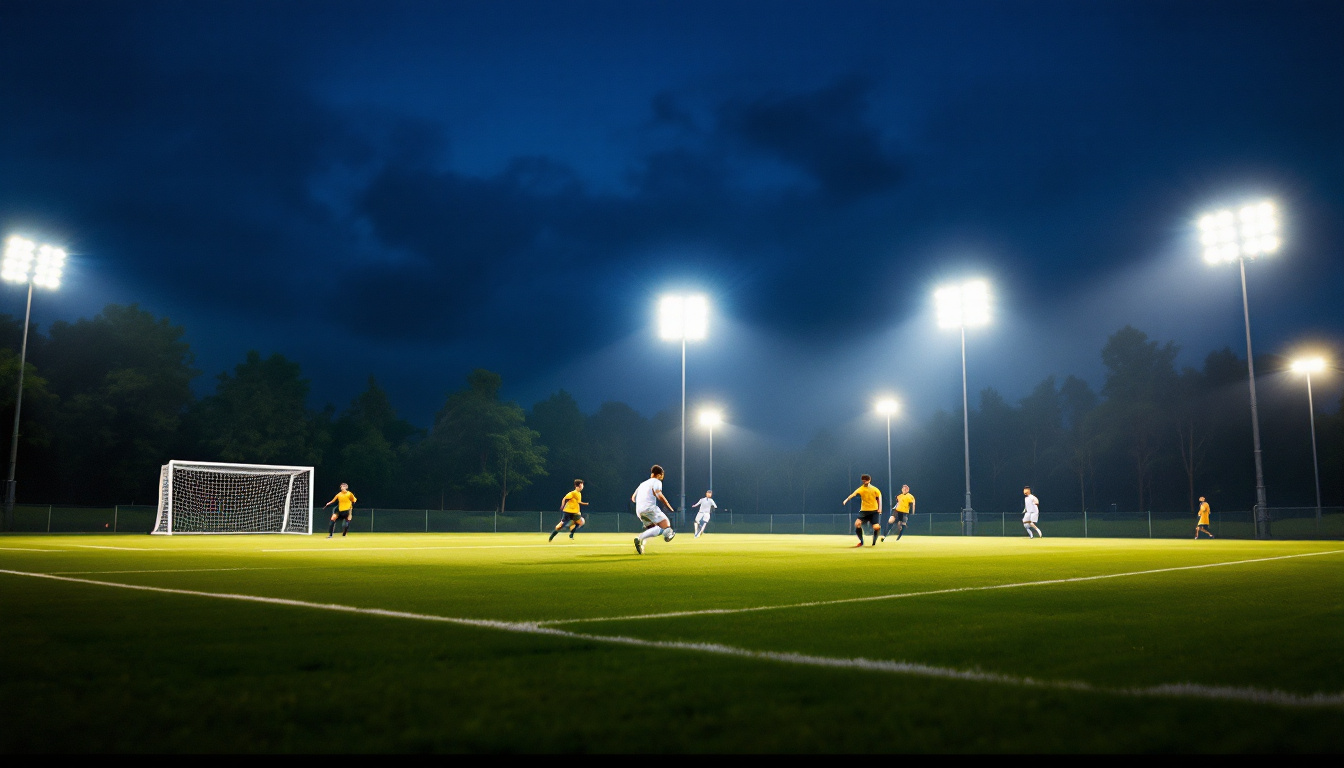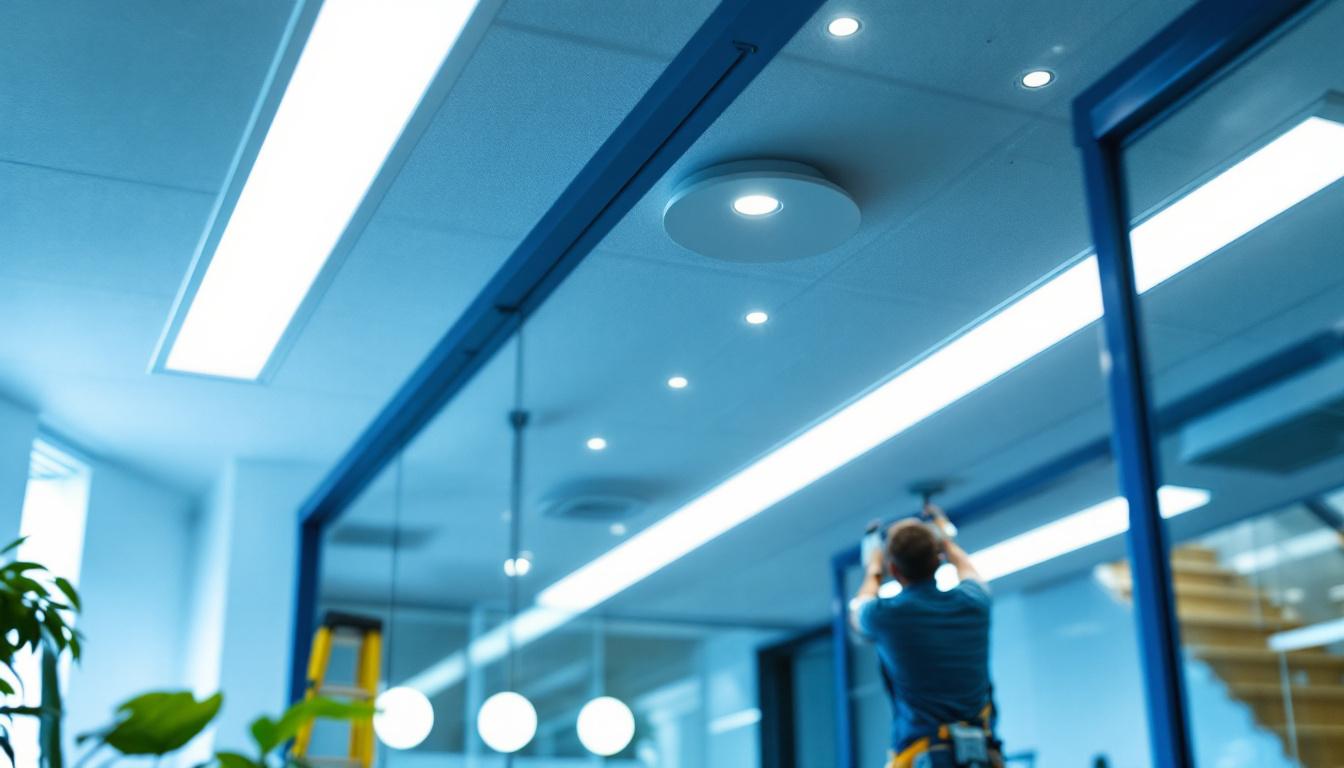
Fluorescent lighting, commonly referred to as fluo lighting, has been a staple in both residential and commercial spaces for decades. For lighting contractors, understanding the advantages and disadvantages of fluo lighting is essential for making informed decisions when selecting lighting solutions for clients. This article delves into the pros and cons of fluo lighting, providing valuable insights for contractors navigating this aspect of the industry.
One of the most significant benefits of fluo lighting is its energy efficiency. Fluorescent bulbs consume considerably less energy compared to traditional incandescent bulbs, making them a popular choice for both residential and commercial applications. This efficiency translates to lower electricity bills for clients, which is an attractive selling point for contractors.
Additionally, energy-efficient lighting solutions often qualify for various incentives and rebates, further enhancing their appeal. Contractors can leverage these financial benefits to encourage clients to opt for fluo lighting over less efficient alternatives. Many utility companies offer programs that reward businesses and homeowners for making the switch to energy-efficient lighting, which can significantly offset initial installation costs and provide long-term savings.
Fluorescent bulbs typically have a longer lifespan than incandescent bulbs, lasting up to 10,000 hours or more. This longevity means that clients will spend less on replacements and maintenance, making fluo lighting a cost-effective choice in the long run. For contractors, this translates to fewer service calls and a more satisfied customer base.
Moreover, the reduced frequency of bulb replacements can lead to less waste, contributing to a more sustainable approach to lighting. This aspect resonates well with environmentally conscious clients, allowing contractors to align their services with modern sustainability goals. In addition, the longer lifespan of fluorescent lighting reduces the environmental impact associated with manufacturing and disposing of bulbs, making it a responsible choice for those looking to minimize their carbon footprint.
Fluo lighting is incredibly versatile, making it suitable for a wide range of applications. From office spaces to retail environments, warehouses, and even residential settings, fluorescent fixtures can adapt to various design and functional requirements. This adaptability allows contractors to offer tailored solutions that meet the unique needs of each project.
Furthermore, fluo lighting comes in various shapes, sizes, and color temperatures, enabling contractors to create the desired ambiance and functionality in any space. This flexibility can be a significant selling point when discussing options with clients. For instance, cooler color temperatures can enhance focus and productivity in workspaces, while warmer tones can create a cozy atmosphere in homes and restaurants. The ability to customize lighting not only enhances the aesthetic appeal but also improves the overall user experience in any environment.
While fluo lighting is available in different color temperatures, it often struggles with color rendering compared to other lighting types, such as LED or incandescent. The Color Rendering Index (CRI) of fluorescent bulbs can vary, which may lead to colors appearing washed out or distorted under their light. This limitation can be particularly problematic in settings where accurate color representation is crucial, such as art studios or retail environments. For instance, artists rely on precise color perception to create their works, and retailers depend on accurate color display to sell products effectively. A poor CRI can result in a significant loss of vibrancy, which may ultimately affect sales and customer satisfaction.
Contractors must be aware of this drawback and communicate it effectively to clients, especially when the quality of light is a significant factor in their decision-making process. Offering alternatives or hybrid solutions may be necessary to address specific client needs. Additionally, it may be beneficial for contractors to provide clients with samples or demonstrations of different lighting options to help them visualize the impact of various CRI levels on their spaces. This hands-on approach can foster a deeper understanding of the importance of color rendering in their specific applications.
Fluorescent bulbs contain small amounts of mercury, which poses environmental hazards if not disposed of properly. This concern has led to stricter regulations regarding the disposal of fluorescent lighting, and contractors must ensure compliance with local laws and guidelines. Improper disposal can result in mercury leaking into the environment, contributing to soil and water contamination, which raises significant health concerns for communities. As awareness of these environmental issues grows, more consumers are seeking sustainable solutions, making it imperative for contractors to stay informed about best practices in lighting disposal.
Educating clients about proper disposal methods and recycling options is essential. Contractors can also promote the use of alternatives, such as LED lighting, which does not contain hazardous materials, as a more environmentally friendly choice. Furthermore, contractors might consider partnering with local recycling programs or initiatives that focus on the safe disposal of fluorescent bulbs, enhancing their reputation as environmentally responsible professionals. By taking proactive steps in this area, contractors can not only protect the environment but also appeal to eco-conscious clients who prioritize sustainability in their projects.
While fluo lighting offers long-term savings through energy efficiency and longevity, the initial cost of purchasing and installing fluorescent fixtures can be higher than that of incandescent options. This upfront investment may deter some clients, particularly those with tight budgets. In addition to the cost of the fixtures themselves, installation expenses can also add to the financial burden, especially in larger spaces that require extensive lighting setups. Clients may not fully appreciate the long-term savings potential without a clear understanding of the overall lifecycle costs associated with different lighting options.
Contractors should be prepared to justify the initial expense by highlighting the long-term benefits, such as reduced energy bills and lower maintenance costs. Creating a clear cost-benefit analysis can help clients see the value in choosing fluo lighting over cheaper alternatives. Moreover, providing case studies or testimonials from previous clients who have experienced significant savings can further bolster the argument for investing in fluorescent lighting. By illustrating real-world examples of energy savings and durability, contractors can effectively persuade clients to consider the bigger picture when making their lighting decisions.
Installing fluo lighting can be more complex than traditional lighting systems. Contractors may need to consider factors such as ballast compatibility and fixture types, which can complicate the installation process. Proper training and knowledge of various systems are essential for ensuring a smooth installation.
Additionally, some older buildings may not be equipped to handle the electrical requirements of fluorescent fixtures, necessitating upgrades to the existing electrical infrastructure. Contractors should assess the compatibility of fluo lighting with the specific project requirements to avoid unexpected challenges during installation.
Fluorescent fixtures come in various designs, but they may not always align with the aesthetic preferences of clients. The traditional tube-style fixtures can be perceived as utilitarian and may not fit well with modern design trends that favor sleek, stylish lighting solutions.
Contractors must stay informed about the latest advancements in fluo lighting design, including decorative fixtures that can enhance the visual appeal of a space. Offering a range of options can help meet the diverse aesthetic preferences of clients while still providing the benefits of fluorescent lighting.
In recent years, LED lighting has gained popularity as a viable alternative to fluo lighting. LEDs offer numerous advantages, including even greater energy efficiency, longer lifespans, and improved color rendering. For contractors, understanding the differences between fluo and LED lighting is crucial for making informed recommendations to clients.
While LEDs may have a higher initial cost, their long-term savings and minimal maintenance requirements often make them a more appealing choice. Contractors should be prepared to discuss the pros and cons of both options, helping clients weigh their priorities and make the best decision for their specific needs.
When advising clients on lighting solutions, a comprehensive cost-benefit analysis can be a powerful tool. This analysis should consider factors such as initial costs, energy savings, maintenance expenses, and the environmental impact of each lighting option. By providing clients with a clear understanding of the financial implications, contractors can help them make informed choices that align with their budgets and values.
Furthermore, presenting case studies or examples of previous projects can illustrate the long-term benefits of fluo lighting, enhancing the contractor’s credibility and expertise in the field.
The lighting industry is constantly evolving, with new technologies and products emerging regularly. For contractors, staying informed about the latest developments in fluo lighting and alternative solutions is essential for maintaining a competitive edge. Attending industry conferences, workshops, and trade shows can provide valuable insights and networking opportunities.
Additionally, subscribing to industry publications and following relevant online forums can help contractors stay updated on trends, best practices, and emerging technologies. This knowledge can enhance their ability to provide informed recommendations to clients, ultimately leading to greater customer satisfaction.
Educating clients about the benefits and drawbacks of fluo lighting is crucial for fostering trust and transparency. Contractors should take the time to explain the technical aspects of the lighting solutions they recommend, ensuring clients understand the implications of their choices.
Providing resources, such as brochures or online guides, can further support client education and help them feel more confident in their decisions. This proactive approach can lead to stronger client relationships and increased referrals.
As environmental concerns continue to shape consumer preferences, emphasizing the sustainability aspects of fluo lighting can be a significant selling point. Highlighting energy efficiency, reduced waste, and proper disposal methods can resonate with eco-conscious clients.
Contractors can also explore partnerships with recycling programs or organizations that promote sustainable practices in the lighting industry. By aligning their services with sustainability goals, contractors can attract a broader clientele and differentiate themselves in a competitive market.
Fluorescent lighting remains a viable option for lighting contractors, offering distinct advantages such as energy efficiency, longevity, and versatility. However, it is essential to weigh these benefits against the potential drawbacks, including color rendering issues, environmental concerns, and installation complexities.
By staying informed, educating clients, and emphasizing sustainability, contractors can successfully navigate the challenges associated with fluo lighting while providing valuable solutions that meet the diverse needs of their clients. Ultimately, a well-rounded understanding of fluo lighting and its alternatives will empower contractors to make informed decisions that enhance their business and satisfy their customers.
Ready to elevate your lighting solutions with the best in the business? At LumenWholesale, we specialize in providing lighting contractors like you with top-quality, spec-grade lighting products at unbeatable wholesale prices. Say goodbye to local distributor markups and hello to a vast selection of reliable, high-performance lighting that meets the highest industry standards. With free shipping on bulk orders, you can stock up on premium lighting without worrying about hidden fees or compromises. Don’t miss out on the perfect blend of quality, affordability, and convenience. Take the next step in optimizing your lighting projects by visiting Wholesale Lighting at the Best Value today.

Discover the innovative world of portable soccer field lights and learn how to future-proof your lighting projects.

Discover how commercial recessed can lights enhance efficiency for lighting contractors, offering energy savings, streamlined installations, and superior illumination quality.

Discover the top strategies lighting contractors use to select and install stairwell light fixtures.

Discover why lighting contractors should prioritize fluorescent shop lights in their projects.